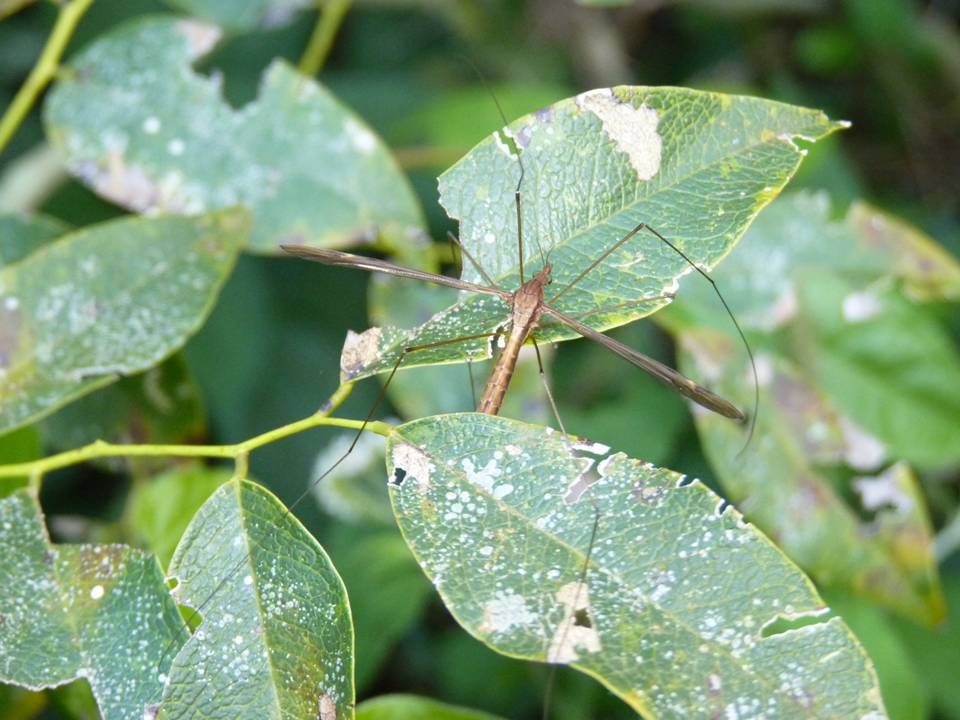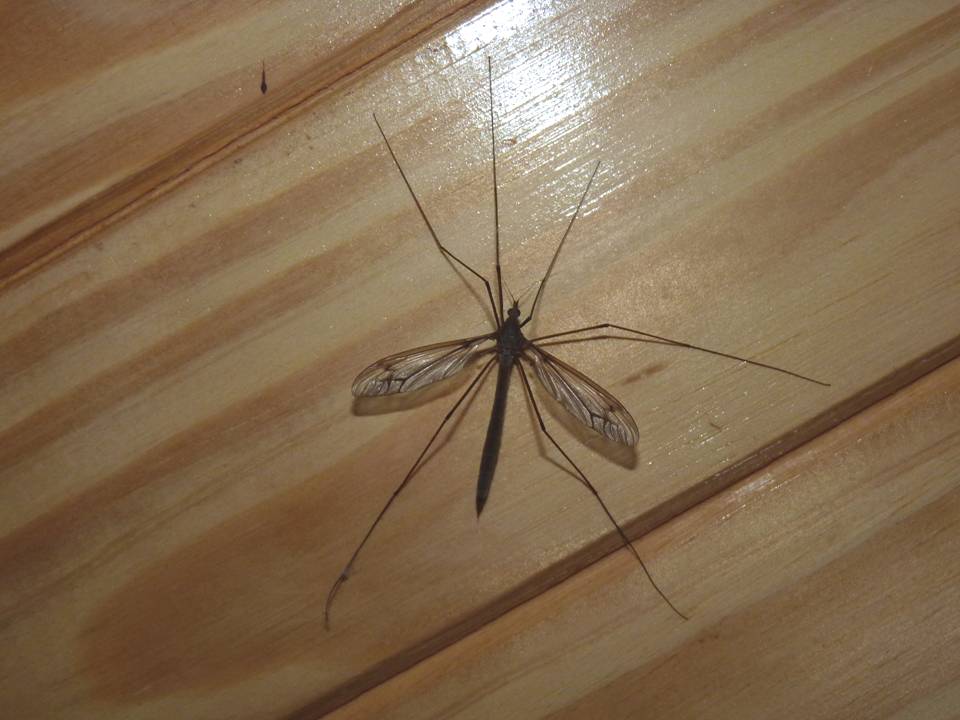

We are very grateful to Dr Sergio Ibaņez-Bernal for the identification of the images
Designed by Paul Smith 2006. This website is copyrighted by law.
Material contained herewith may not be used without the prior written permission of FAUNA Paraguay.
Photographs on this page were taken by Paul Smith are used with permission.
 | FIGURE 1 |
|
 | FIGURE 2 |
|
FIGURE 1 - Unidentified sp. - PROCOSARA, Parque Nacional San Rafael (Paul Smith April 2010).
FIGURE 2 - Unidentified sp. female - PROCOSARA, Parque Nacional San Rafael (Paul Smith April 2010).
TIPULIDAE - CRANE FLIES
Crane Flies or "Daddy Long-legs" are a distinctive dipteran family with long slender abdomen, long thin wings and extraordinarily long legs. This is the largest dipteran family, with almost 4300 described species. They are familiar flies worldwide and various legends have been attached to them, including the misconception that they are winged spirders, are venomous or feed on mosquitoes (mosquito hawk is another common name in local usage). Adults of many species do not feed as adults and simply mate and die. A few species consume nectar in the adult form.
Characteristics
Crane flies vary in size with some tiny and mosquito-like and others up to 60mm long. Small species can be distinguished from mosquitoes by the scaleless wings, the lack of piercing mouthparts and a V-shaped suture on the thorax. The wings are typically held at right angles to the body and the large halteres are usually visible. They are weak fliers and tend to wobble whilst in the air.
Life Cycles
Females can be recognised by their often swollen abdomen (which contain eggs) and pointed ovipositor (often mistaken for a sting). Males have a squarish tip to the abdomen. Subterranean larvae are known as "leatherjackets" and consume the roots of plants, particularly grasses. In some areas they are considered pests. A few species have aquatic larvae. The larvae of only 2% of known species have been formally described.
Click on the images to enlarge them.

